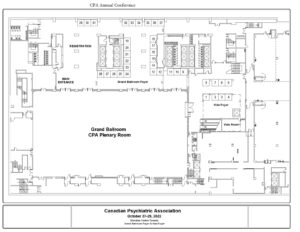C04 – Co-Occurring Autism Spectrum and Obsessive–Compulsive Disorder: A Review and Synthesis of Diagnosis, Treatment, and Clinical Considerations
Thursday, Oct. 19
14:30 – 15:30 (1 hr)
Meeting Room: Junior Ballroom D (3rd floor – North Tower)
Rahat Hossain, MD; Alex Porthukaran, PhD; Peggy Richter, MD; Natasha Fernandes, MD; Pushpal Desarkar*, MD
CanMEDS Roles:
- Medical Expert
- Scholar
- Leader
At the end of this session, participants will be able to: 1) Develop a detailed knowledge of the assessment and treatment for both autism spectrum disorder (ASD) and obsessive–compulsive disorder (OCD); 2) Learn to navigate challenges in the diagnosis and misdiagnosis of co-occurring (ASD) and OCD; and 3) Understand principles for adapting psychotherapy and pharmacotherapy for the treatment of OCD in patients with autism.
Co-occurring obsessive–compulsive disorder (OCD) in people with autism spectrum disorder (ASD) requires specialized assessment and management, given evidence of poorer insight, greater functional impairment, increased symptom severity, and reduced efficacy of treatment. This course will help participants better understand and learn to manage these co-occurring conditions. OCD and ASD can be differentiated on the basis of their respective repetitive behaviours, whereby in OCD they are egodystonic and resisted and in ASD they are egosyntonic and pleasurable. Even so, there is limited understanding of the function and mental state behind OCD repetitive behaviours in ASD, as obsessions are uncommon in ASD and there are altered and ambiguous presentations of OCD in those with ASD. The Obsessive-Compulsive Inventory-Revised (OCI-R) is a brief self-reported measure validated for use in verbal adults to help differentiate between ASD and OCD. Treatment with pharmacotherapy remains under-investigated, with only fluoxetine showing promise for OCD in children and youth with ASD. Treatment with standard CBT programs for OCD have reduced efficacy in people with OCD and ASD; however, adapted CBT programs for ASD and OCD can result in large effect sizes and gains may persist for up to 11 years. Some adaptations to CBT for OCD in people with ASD include focusing on exposure and response prevention rather than cognitive elements, using the individuals’ own special interests to promote engagement, and presenting information visually rather than verbally. Participants will be equipped with a review of this literature, expert opinion, and pearls for their clinical practice.
References:
- Bedford SA, Hunsche MC, Kerns CM. Co-occurrence, assessment and treatment of obsessive compulsive disorder in children and adults with autism spectrum disorder. Curr Psychiatr Rep 2020;22(10):53.
- Elliott SJ, Marshall D, Morley K, et al. Behavioural and cognitive behavioural therapy for obsessive compulsive disorder (OCD) in individuals with autism spectrum disorder (ASD). Cochrane Database Syst Rev 2021;9(9):CD013173.

